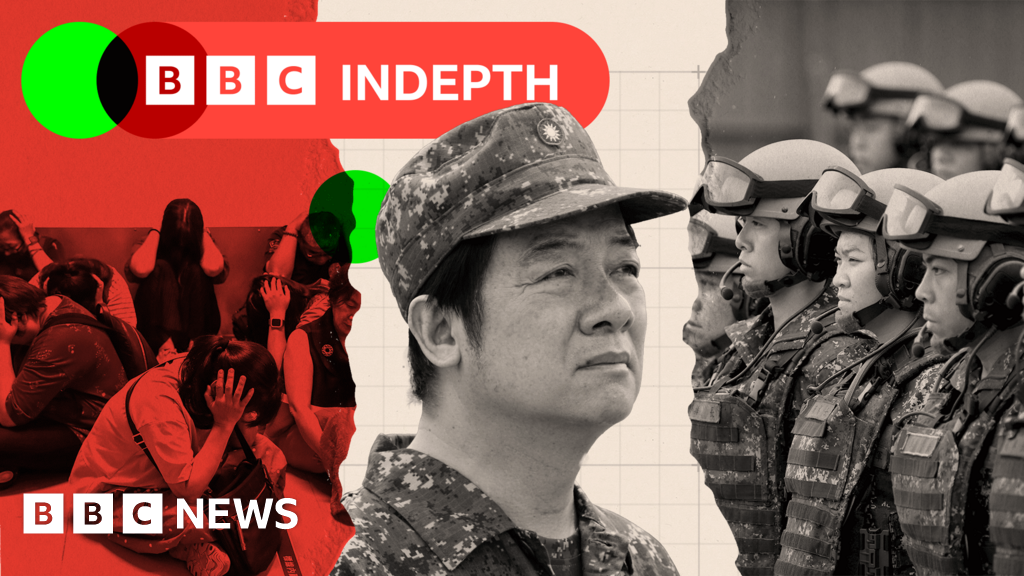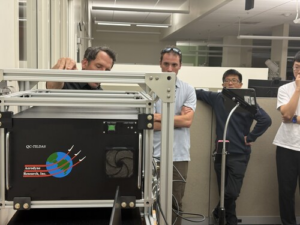
On a seemingly ordinary Friday morning on the Taiwanese island of Kinmen, just a few kilometers from China’s coast, the tranquility was shattered by the wail of an air raid siren. In a local government office, individuals hurriedly switched off lights and sought refuge under tables, while others rushed to an underground car park. Nearby, hospital staff attended to individuals with bloody injuries. However, the blood was artificial, and the casualties were volunteer actors participating in mandatory civil defense and military drills held across Taiwan last month. The objective was clear: to rehearse responses to a potential Chinese attack.
China has persistently vowed to “reunify” with the self-governing Taiwan, not ruling out the use of force. This looming threat is one that Taiwan is increasingly taking seriously. President William Lai, who assumed office last year, is leading one of the most robust defense initiatives in recent years. Despite gaining support, his efforts have also sparked controversy among the populace.
Strengthening Taiwan’s Military Defenses
Taiwan’s government, under President Lai, often reiterates a crucial phrase: “By preparing for war, we are avoiding war.” This sentiment underscores their commitment to bolstering Taiwan’s defenses without seeking conflict. Among the significant reforms is a proposed 23% increase in defense spending for next year, totaling NT$949.5 billion, which would exceed 3% of the GDP, following U.S. pressure to enhance military investments. Lai has pledged to raise this to 5% by 2030.
In response to longstanding issues of troop shortages and low morale, Taiwan has extended its mandatory conscription program, increased military pay and benefits, and introduced more rigorous training. The annual Han Kuang war games, designed to simulate a military response to a Chinese attack, have been revamped to incorporate more realistic scenarios. This year’s exercises were the largest yet, involving 22,000 reservists, a 50% increase from the previous year.
Civil Defense Drills and Public Perception
Beyond military preparations, the Taiwanese government is also preparing its citizens for potential invasion through increased frequency and scale of civil defense drills. One of the largest exercises, the Urban Resilience Exercise, was conducted last month, involving air raid drills across major urban areas. Residents were required to seek shelter, and businesses paused operations, with penalties for non-compliance.
In Taipei, emergency teams and volunteers practiced evacuating injured individuals, extinguishing fires, and navigating buildings designed to mimic missile strikes. While some citizens, like Stanley Wei, support these drills, citing an increased threat from China, others remain skeptical. “Even if an attack comes, what can we do?” questions Mr. Liu, an engineer. This sentiment reflects a common belief that the threat, while real, may not materialize imminently.
Historical Context and Economic Ties
On the island of Kinmen, skepticism is even more pronounced. Having experienced deadly clashes in the late 1940s and 50s, the island is considered a frontline in any potential conflict. However, improved cross-strait relations and economic ties have shifted perceptions. Many residents view their proximity to China as beneficial, with the local economy thriving on Chinese tourism.
Yang Peiling, a 77-year-old shop owner, recalls the shelling of Kinmen during the 1958 Second Taiwan Strait Crisis but believes that China would not attack now. “We are all Chinese, we are all one family,” she argues. This perspective, that an invasion would be too costly and counterproductive for China, is shared by many Taiwanese.
U.S. Involvement and Global Implications
The U.S. plays a critical role in Taiwan’s security, bound by law to assist in its defense. Although confidence in U.S. support has fluctuated, many Taiwanese believe that American intervention would deter China from military action. “China’s current military strength does not match America’s,” says Shen Ming-shih, a defense analyst with the INDSR, emphasizing the strategic imbalance.
Furthermore, Taiwan’s pivotal role in the global semiconductor industry suggests that the international community would likely intervene to prevent disruption. However, after decades of threats, many Taiwanese view Beijing’s rhetoric as “the boy who cried wolf,” prioritizing mental health over constant vigilance.
The Ongoing Debate and Future Outlook
The question of whether China will invade Taiwan remains an existential debate, intensified by recent political developments. President Lai’s administration, perceived by Beijing as “separatists,” has been accused of provoking China. Any formal declaration of independence could trigger military action, given China’s legal stance on preventing Taiwan’s “secession.”
China has increased its military presence around Taiwan, with frequent incursions into Taiwanese airspace and waters. While experts are divided on the likelihood of an imminent invasion, the heightened tensions and military maneuvers raise the possibility of confrontation.
Ultimately, Taiwan’s preparations reflect a broader strategy to deter aggression through readiness and resilience. As geopolitical dynamics evolve, the island’s future will likely hinge on a delicate balance of defense, diplomacy, and international alliances.







